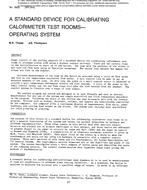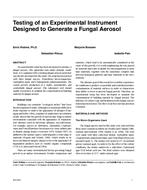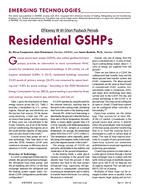Mold growth is one of the first signs of biological growth linked to too high local moisture content in structures. The numerical mold growth model was based on comprehensive laboratory studies with northern wood species, and it could be used to predict the mold growth in structures. The mold growth is presented as a mold index that may have values between 0 and 6, and it is solved from the changing temperature and humidity conditions. This model can be used as a part of heat, air, and moisture transfer models or to post-process the data derived from simulations or experiments. The numerically solved mold index can be used as one criterion for the moisture performance of the analyzed structure. The main deficiency of the model is that it includes only wood material as the mold growth breeding ground. This study presents new results for modeling of mold growth on the surface of other building materials, such as gypsum board, cement screed on concrete, porous wood fiberboard, and spruce plywood. In addition to extended material data, some evaluations were carried out to better predict the dynamic effect of humidity on the mold growth. This study is active, and further information about the effect of changing dry and cold conditions on the regression and recovery of mold growth will be produced in the new project.
Presented at Thermal Performance of Exterior Envelopes of Whole Buildings X – December 2007
Units: SI
Citation: Thermal Performance of Exterior Envelopes of Whole Buildings X
Product Details
- Published:
- 2008
- Number of Pages:
- 8
- File Size:
- 1 file , 2.2 MB
- Product Code(s):
- D-BldgsX162


